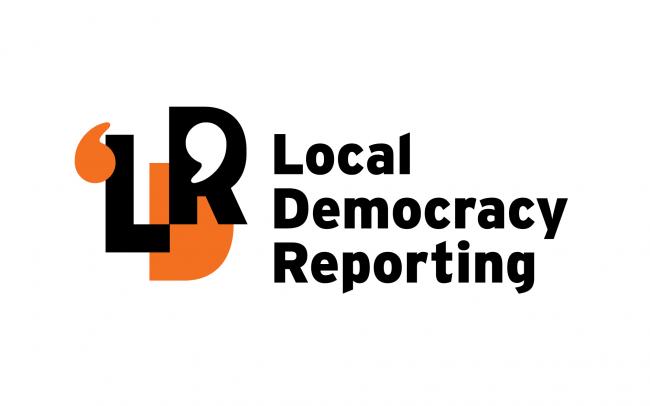Respiratory physician Lutz Beckert considers chronic obstructive pulmonary disease management, including the prevention of COPD, the importance of smoking cessation and pulmonary rehabilitation, and the lifesaving potential of addressing treatable traits. He also discusses the logic of inhaler therapy, moving from single therapy to dual and triple therapy when indicated, as well as other aspects of management
Rural doctor trainee numbers increase on West Coast
Rural doctor trainee numbers increase on West Coast

A jump in rural doctor trainee numbers on the West Coast is expected to create one of the "largest cohorts of training doctors" in the region this year.
At the same time, the number of rural generalist positions appointed in the region have doubled over the past three years, says Health NZ Te Whatu Ora.
The rural generalist model was launched in 2019 to solve chronic shortages of doctors on the Coast.
Health NZ associate director of operations for the West Coast Philip Wheble said the rural generalist model "is paying dividends" across the region.
"We are investing in the future with the training of our junior medical workforce in rural hospitals and (in 2024) we will have one of the largest cohorts of training doctors we have ever had on the Coast."
There were 14.43 (full time equivalent) rural generalists, filled by 19 individuals, in November 2023.
This was up from 7.15 FTE positions, filled by nine individuals, in June 2020.
In addition, Health NZ had engaged an additional three full-time equivalent GPs (four individuals) and 7.3 full-time equivalent rural generalists (10 individuals) over the past three years, Mr Wheble said.
The total number of full time equivalent Health NZ GPs in the region in June 2020 was 5.71 FTE, filled by seven individuals.
"This increased to a total of 8.63 FTE filled by 11 individuals in November 2023," he said.
"We have also seen an increase in nurse practitioners where we had three FTE filled by three individuals and this has now increased to 4.25 FTE filled by 6 individuals."
There continued to be a few West Coast positions to fill by Health NZ including a couple of GP, rural generalist and psychiatrist roles.
The rural generalist team covers primary care, urgent care, emergency medicine, general medicine, paediatrics, orthopaedics, and obstetrics/gynaecology.
He said bringing in more staff has helped Health NZ West Coast to support primary care as well as creating "more robust" emergency, obstetrics and medicine teams.
The Coast also had in-house specialists -- psychiatry, anaesthetics, general surgery plus obstetrics and gynaecology.
Those services were bolstered via Health NZ Canterbury to support local care and tertiary transfers to Christchurch Hospital where needed. In addition, nurse practitioners in primary care had been increased.
"This significant improvement in the permanent staffing within primary care is something that has not occurred for some time on Coast. It also means that our spend on locums has decreased considerably in the last three years," Mr Wheble said.
At the same time, primary care staff numbers in the region should continue to increase, given a greater focus on rural in the national health workforce plan and a commitment on the West Coast to develop its rural generalist workforce, he said.
"In the short term, we will continue managing our staffing challenges, which includes the use of locum doctors and telehealth."





![Barbara Fountain, editor of New Zealand Doctor Rata Aotearoa, and Paul Hutchison, GP and senior medical clinician at Tāmaki Health [Image: Simon Maude]](/sites/default/files/styles/thumbnail_cropped_100/public/2025-03/Barbara%20Fountain%2C%20editor%20of%20New%20Zealand%20Doctor%20Rata%20Aotearoa%2C%20and%20Paul%20Hutchison%2C%20GP%20and%20senior%20medical%20clinician%20at%20T%C4%81maki%20Health%20CR%20Simon%20Maude.jpg?itok=-HbQ1EYA)
![Lori Peters, NP and advanced health improvement practitioner at Mahitahi Hauora, and Jasper Nacilla, NP at The Terrace Medical Centre in Wellington [Image: Simon Maude]](/sites/default/files/styles/thumbnail_cropped_100/public/2025-03/2.%20Lori%20Peters%2C%20NP%20and%20advanced%20HIP%20at%20Mahitahi%20Hauora%2C%20and%20Jasper%20Nacilla%2C%20NP%20at%20The%20Terrace%20Medical%20Centre%20in%20Wellington%20CR%20Simon%20Maude.jpg?itok=sUfbsSF1)
![Ministry of Social Development health and disability coordinator Liz Williams, regional health advisors Mary Mojel and Larah Takarangi, and health and disability coordinators Rebecca Staunton and Myint Than Htut [Image: Simon Maude]](/sites/default/files/styles/thumbnail_cropped_100/public/2025-03/3.%20Ministry%20of%20Social%20Development%27s%20Liz%20Williams%2C%20Mary%20Mojel%2C%20Larah%20Takarangi%2C%20Rebecca%20Staunton%20and%20Myint%20Than%20Htut%20CR%20Simon%20Maude.jpg?itok=9ceOujzC)
![Locum GP Helen Fisher, with Te Kuiti Medical Centre NP Bridget Woodney [Image: Simon Maude]](/sites/default/files/styles/thumbnail_cropped_100/public/2025-03/4.%20Locum%20GP%20Helen%20Fisher%2C%20with%20Te%20Kuiti%20Medical%20Centre%20NP%20Bridget%20Woodney%20CR%20Simon%20Maude.jpg?itok=TJeODetm)
![Ruby Faulkner, GPEP2, with David Small, GPEP3 from The Doctors Greenmeadows in Napier [Image: Simon Maude]](/sites/default/files/styles/thumbnail_cropped_100/public/2025-03/5.%20Ruby%20Faulkner%2C%20GPEP2%2C%20with%20David%20Small%2C%20GPEP3%20from%20The%20Doctors%20Greenmeadows%20in%20Napier%20CR%20Simon%20Maude.jpg?itok=B0u4wsIs)
![Rochelle Langton and Libby Thomas, marketing advisors at the Medical Protection Society [Image: Simon Maude]](/sites/default/files/styles/thumbnail_cropped_100/public/2025-03/6.%20Rochelle%20Langton%20and%20Libby%20Thomas%2C%20marketing%20advisors%20at%20the%20Medical%20Protection%20Society%20CR%20Simon%20Maude.jpg?itok=r52_Cf74)
![Specialist GP Lucy Gibberd, medical advisor at MPS, and Zara Bolam, urgent-care specialist at The Nest Health Centre in Inglewood [Image: Simon Maude]](/sites/default/files/styles/thumbnail_cropped_100/public/2025-03/7.%20Specialist%20GP%20Lucy%20Gibberd%2C%20medical%20advisor%20at%20MPS%2C%20and%20Zara%20Bolam%2C%20urgent-care%20specialist%20at%20The%20Nest%20Health%20Centre%20in%20Inglewood%20CR%20Simon%20Maude.jpg?itok=z8eVoBU3)
![Olivia Blackmore and Trudee Sharp, NPs at Gore Health Centre, and Gaylene Hastie, NP at Queenstown Medical Centre [Image: Simon Maude]](/sites/default/files/styles/thumbnail_cropped_100/public/2025-03/8.%20Olivia%20Blackmore%20and%20Trudee%20Sharp%2C%20NPs%20at%20Gore%20Health%20Centre%2C%20and%20Gaylene%20Hastie%2C%20NP%20at%20Queenstown%20Medical%20Centre%20CR%20Simon%20Maude.jpg?itok=Z6u9d0XH)
![Mary Toloa, specialist GP at Porirua and Union Community Health Service in Wellington, Mara Coler, clinical pharmacist at Tū Ora Compass Health, and Bhavna Mistry, specialist GP at Porirua and Union Community Health Service [Image: Simon Maude]](/sites/default/files/styles/thumbnail_cropped_100/public/2025-03/9.%20Mary%20Toloa%2C%20Porirua%20and%20Union%20Community%20Health%20Service%20in%20Wellington%2C%20Mara%20Coler%2C%20T%C5%AB%20Ora%20Compass%20Health%2C%20and%20Bhavna%20Mistry%2C%20PUCHS%20CR%20Simon%20Maude.jpg?itok=kpChr0cc)